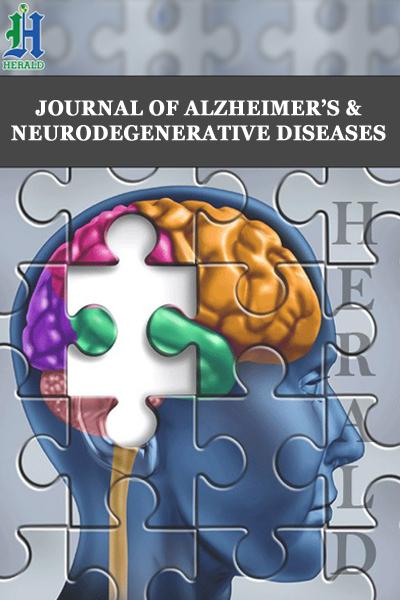
Are Immunological Threshold Implicated from a Case Report with Cerebral Amyloid Angiopathy?
*Corresponding Author(s):
Takashi NishidaDepartment Of Internal Medicine, Second Hokusou Hospital, 803 Hatsutomi, Kamagaya City, Chiba, Japan
Tel:047-445-5552,
Email:tkshnshd@gmail.com
Abstract
Recently, we published the article entitled "A case of probable cerebral amyloid angiopathy preceded by symmetrical diffusion-weighted imaging lesions" [1]. In this article, we described a 76-year-old man with possible Alzheimer's disease (AD) dementia and steroid-responsive probable cerebral amyloid angiopathy-related inflammation (CAA-RI).
Keywords
INTRODUCTION
Dear Sir,
Recently, we published the article entitled "A case of probable cerebral amyloid angiopathy preceded by symmetrical diffusion-weighted imaging lesions" [1]. In this article, we described a 76-year-old man with possible Alzheimer's disease (AD) dementia and steroid-responsive probable cerebral amyloid angiopathy-related inflammation (CAA-RI). The patient was diagnosed with possible AD dementia according to the diagnosis of dementia due to AD [2] proposed by the National Institute on Aging-Alzheimer’s Association workgroups, and probable CAA was diagnosed according to the Modified Boston Criteria for CAA [3]. Initial diffusion-weighted imaging (DWI) demonstrated symmetrical high signal intensities in the bilateral posterior region, which might suggest ischemia and predilection of CAA pathology for posterior brain regions [4]. Ozagrel, cilostazol, dipyridamole and heparin had no effect on the patient's symptoms. Magnetic resonance images (MRI) thereafter demonstrated asymmetrical cortical swelling only in the left temporo-parieto-occipital region with leptomeningeal enhancement, which might show subtle cerebrovascular immunological response may influence the subsequent distinct differences.
The inflammation in CAA-RI may result from an immune response directly triggered by cerebrovascular amyloid beta protein deposits [5]. Autoinflammatory process with anti-amyloid beta 42 antibodies and interleukin-8 may be involved in the pathogenesis and directly affected by corticosteroid therapy [6]. Regarding lymphatic drainage of the brain and the pathophysiology of neurological disease [7], vessel pulsations appear to be the driving force for the lymphatic drainage along artery wall, and as vessels stiffen with age, amyloid peptides deposit in the drainage pathways as CAA. The lymphatic drainage of interstitial fluid and solutes from brain parenchyma along capillary and artery walls is significant for a range of neurological disorders including CAA.
Although initial high signal DWI changes suggestive of ischemia was observed bilaterally, there was no right hemispheric lesion thereafter throughout entire clinical course. Although antiplatelet therapy and heparin in CAA patients are considered to be ineffective due to complications, those therapies in this patient might be effective at least for right occipital ischemia. As mentioned above, subtle cerebrovascular immunological response may influence the subsequent distinct differences, and may imply so called window period for immunological threshold in this patient. Asymptomatic patients whose amyloid positron emission topography showed the greater occipital-to-global ratio [4] may be required to re-examine MRI to confirm whether there are no high signal symmetrical posterior DWI changes.
REFERENCES
- Nishida T, Hattori T, Yuasa T (2019) A case of probable cerebral amyloid angiopathy preceded by symmetrical diffusion-weighted imaging lesions. Neurology and Clinical Neuroscience.
- McKhann GM, Knopman DS, Chertkow H, Hyman BT, Jack CR, et al. (2011) The diagnosis of dementia due to Alzheimer's disease: Recommendations from the national institute on aging?alzheimer's association workgroups on diagnostic guidelines for Alzheimer's disease. Alzheimers Dement 7: 263-269.
- Greenberg SM, Charidimou A (2018) Diagnosis of cerebral amyloid angiopathy: Evolution of the boston criteria. Stroke 49: 491-497.
- Johnson, KA, Gregas, M, Becker, JA, Kinnecom C, Salat DH, et al. (2007) Imaging of amyloid burden and distribution in cerebral amyloid angiopathy. Ann Neurol 62: 229-234.
- Salvarani C, Hunder GG, Morris JM, Brown RD, Christianson T, et al. (2013)Abeta-related angiitis: Comparison with CAA without inflammation and primary CNS vasculitis. Neurology 81: 1596-1603.
- Kimura A, Sakurai T, Yoshikura N, Hayashi Y, Takemura M, et al. (2010) Corticosteroid therapy in a patient with cerebral amyloid angiopathy?related inflammation. J Neuroinflammation10: 39.
- Weller RO, Djuanda E, Yow HY, Carare RO (2009) Lymphatic drainage of the brain and the pathophysiology of neurological disease. ActaNeuropathol 117:1-14.
Citation: Nishida T (2019) Are Immunological Threshold Implicated from a Case Report with Cerebral Amyloid Angiopathy? J AlzheimersNeurodegener Dis 5: 023.
Copyright: © 2019 Takashi Nishida, et al. This is an open-access article distributed under the terms of the Creative Commons Attribution License, which permits unrestricted use, distribution, and reproduction in any medium, provided the original author and source are credited.

